We are privileged to present this magnificent mantel clock, an exceptional work of horological art, representative of the classical French style of the 19th century, specifically dating from the Louis-Philippe and Charles X periods. This sumptuous timepiece is not merely an instrument for measuring time, but a sculpture rich in symbolism, illustrating the mastery of chasing and bronze statuary from the era.
Harmonious Design and Subtle Material Contrast:The clock distinguishes itself through a harmonious blend of brilliant gilded bronze and finely sculpted black patinated bronze details. This chromatic duality, where the radiance of gold meets the depth of the dark patina, creates a striking visual contrast, characteristic of luxury productions from the post-Empire era. The base of the clock is richly decorated with delicate symmetrical patterns and embossed ornaments. The abundance of gilded ornaments, executed with great finesse, confers a touch of refinement and grandeur, reflecting the aristocratic European elegance of the 19th century.
The Clock Face, Center of Attention:The clock face, centrally positioned within the composition, is round, featuring a plain white background with perfectly legible black Roman numerals. The hands are elegant and delicate, blending harmoniously with the artistic ensemble of the clock. The face is encircled by a finely crafted gilded border that draws the eye and highlights its classical perfection.
The Allegorical Scene at the Summit:At the top of the clock, two imposing figures in patinated bronze embody classical mythological figures, a theme dear to Neoclassicism and its continuations.
On the left: A winged male figure, holding a large scythe, symbolizing Chronos, the god of Time. The detailed sculpture of the muscles and wings highlights the power and authority of this allegory of inevitable time.
On the right: A female figure in a graceful pose, holding what appears to be a lyre or a tablet, symbolizing Art and the Harmony of Life. The folds of her robe are sculpted with finesse, bringing a sense of softness and realism.Together, these two statues embody the timeless contrast between the eternal flow of time and the immortality of art, a recurring and profound theme in classical art.
Ornate Base and Period Symbolism:The imposing base of the clock is richly gilded and adorned with symmetrical, perfectly executed vegetal motifs in the shape of acanthus leaves. At the center, below the clock face, there is a sculpted face of mythological inspiration, likely representing a goddess or an ornamental figure typical of the Louis-Philippe era. These details underscore the attention paid to finishes and the adaptation of classical styles to the tastes of the July Monarchy.
An Artistic and Historical Masterpiece:The style of this clock brilliantly reflects the Louis-Philippe and Charles X periods, successfully combining neoclassical elegance with subtle symmetry and a newfound expressiveness. The precious materials and masterful craftsmanship demonstrate that this clock was designed for the high society and nobility of the time, eager to display their refined taste and classical erudition. This is not merely an instrument for measuring time, but a work of art in its own right, rich in symbolism, expressing the beauty of sculpture and metalwork in the 19th century.
Key Features & Acquisition Potential:
Powerful Allegorical Design: The union of the figures of Chronos and Art offers a profound visual narrative on the nature of time and artistic legacy.
Exceptional Bronze Quality: The contrast between the radiant gilded bronze and the deep patinated bronze, coupled with the finesse of the chasing, testifies to a very high level of craftsmanship.
Neoclassical Materials: The use of these two bronzes as primary materials is characteristic of the elegance of the early 19th century.
Status Symbol: Such a clock, by its size and the richness of its details, was an important social marker in aristocratic and bourgeois interiors.
Tangible Historical Piece: It represents a milestone in the evolution of post-Napoleon I styles, illustrating the continuity of classical taste during a period of political transition.
Collectible Investment: For collectors of fine art horology and 19th-century decorative arts, this clock constitutes a major acquisition and a sound investment.


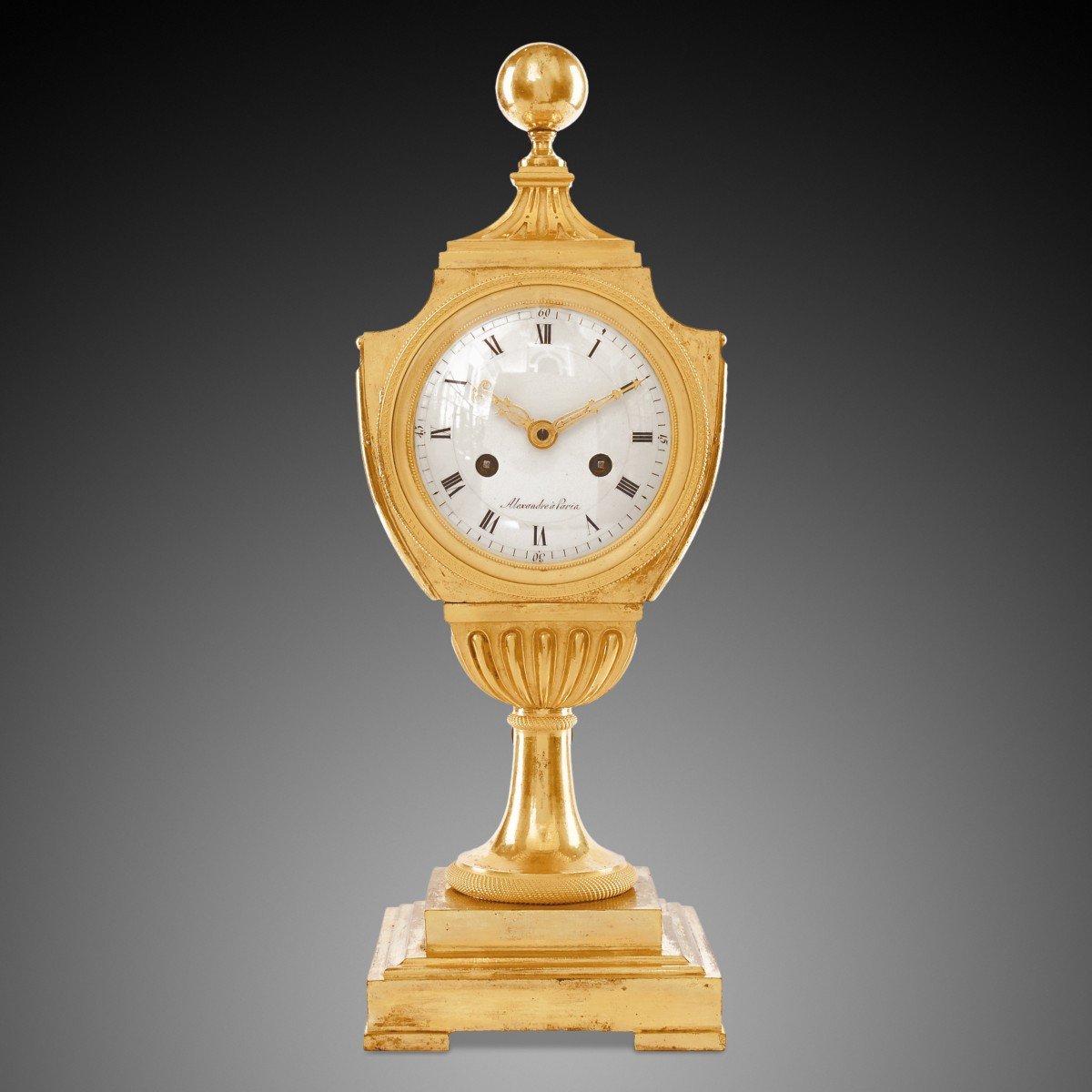
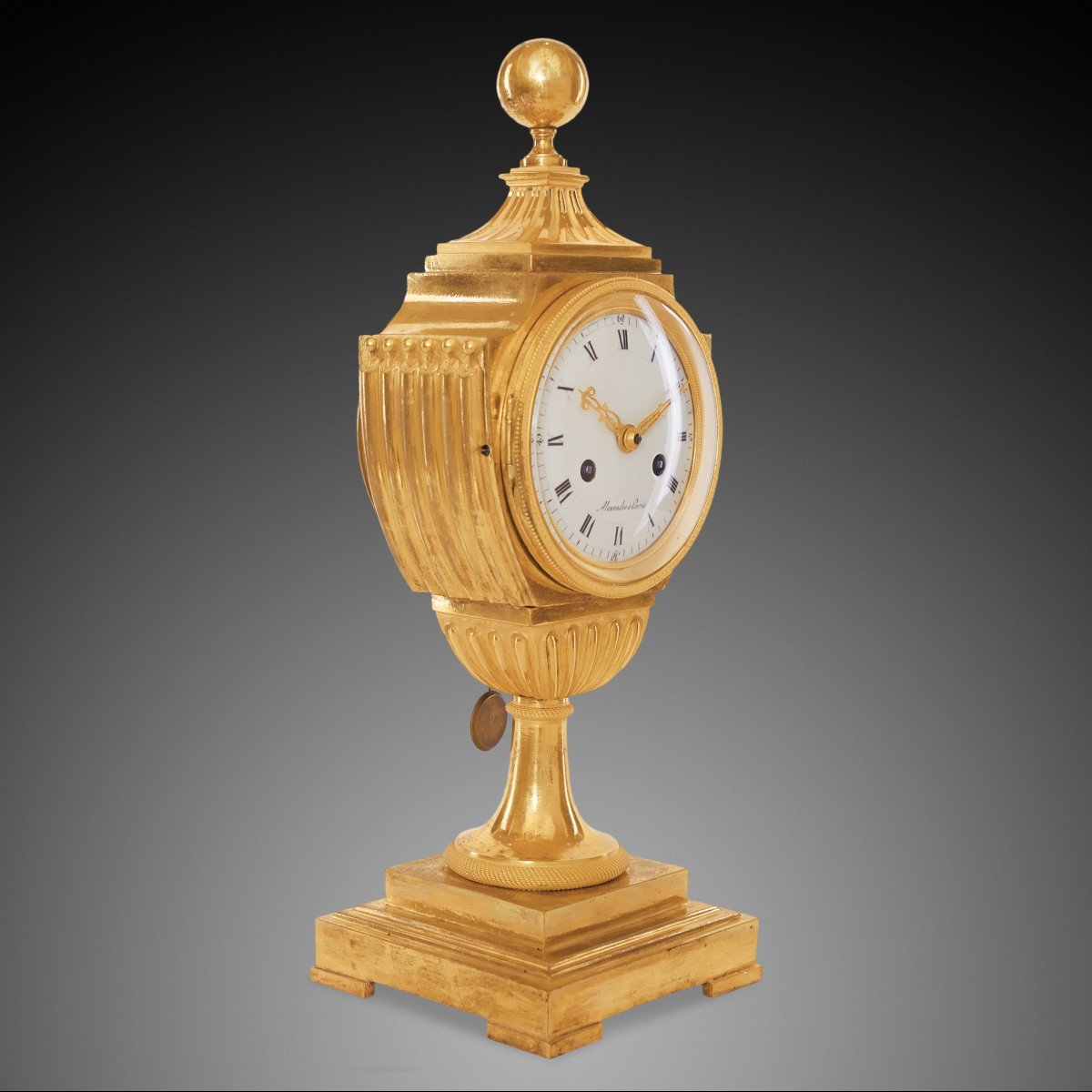
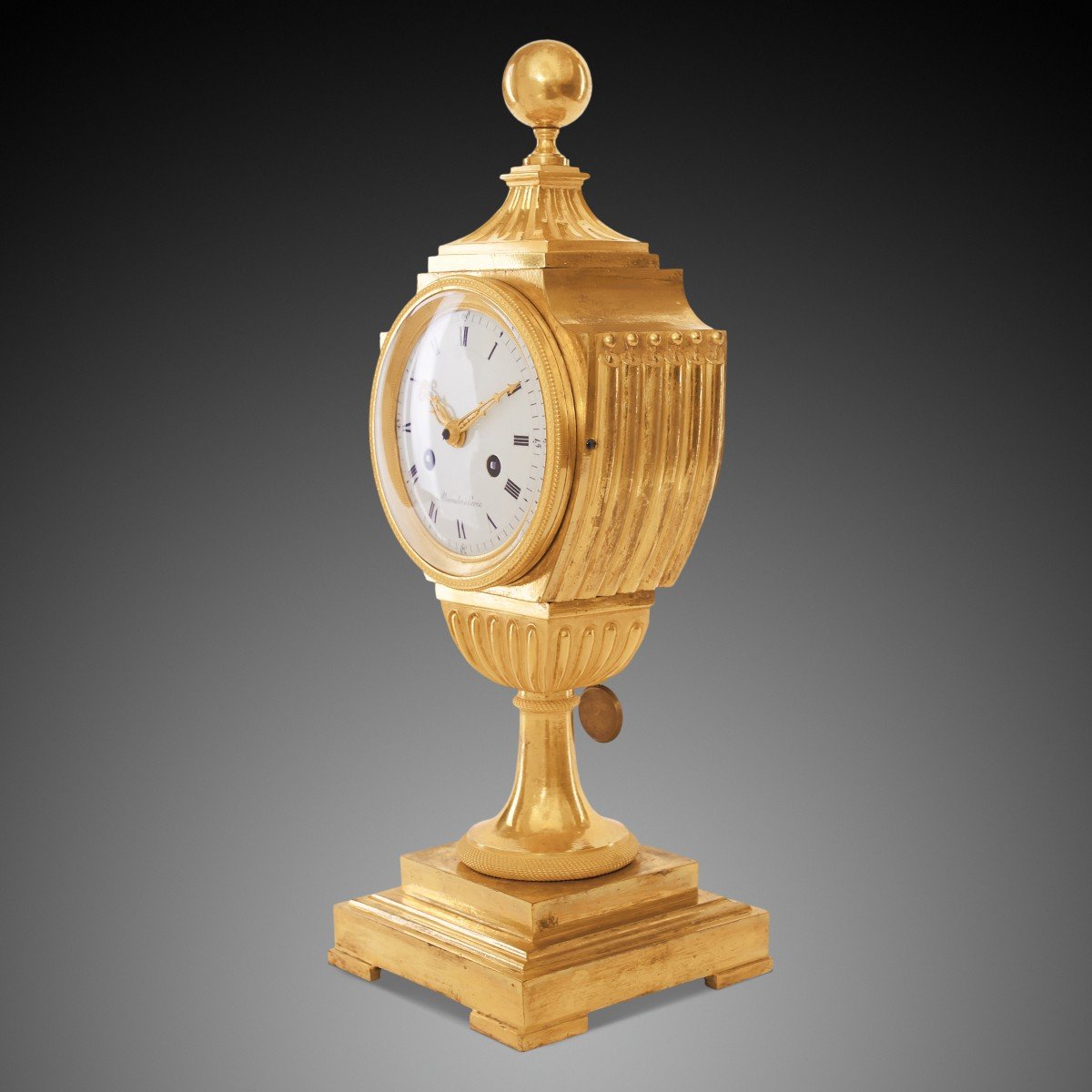
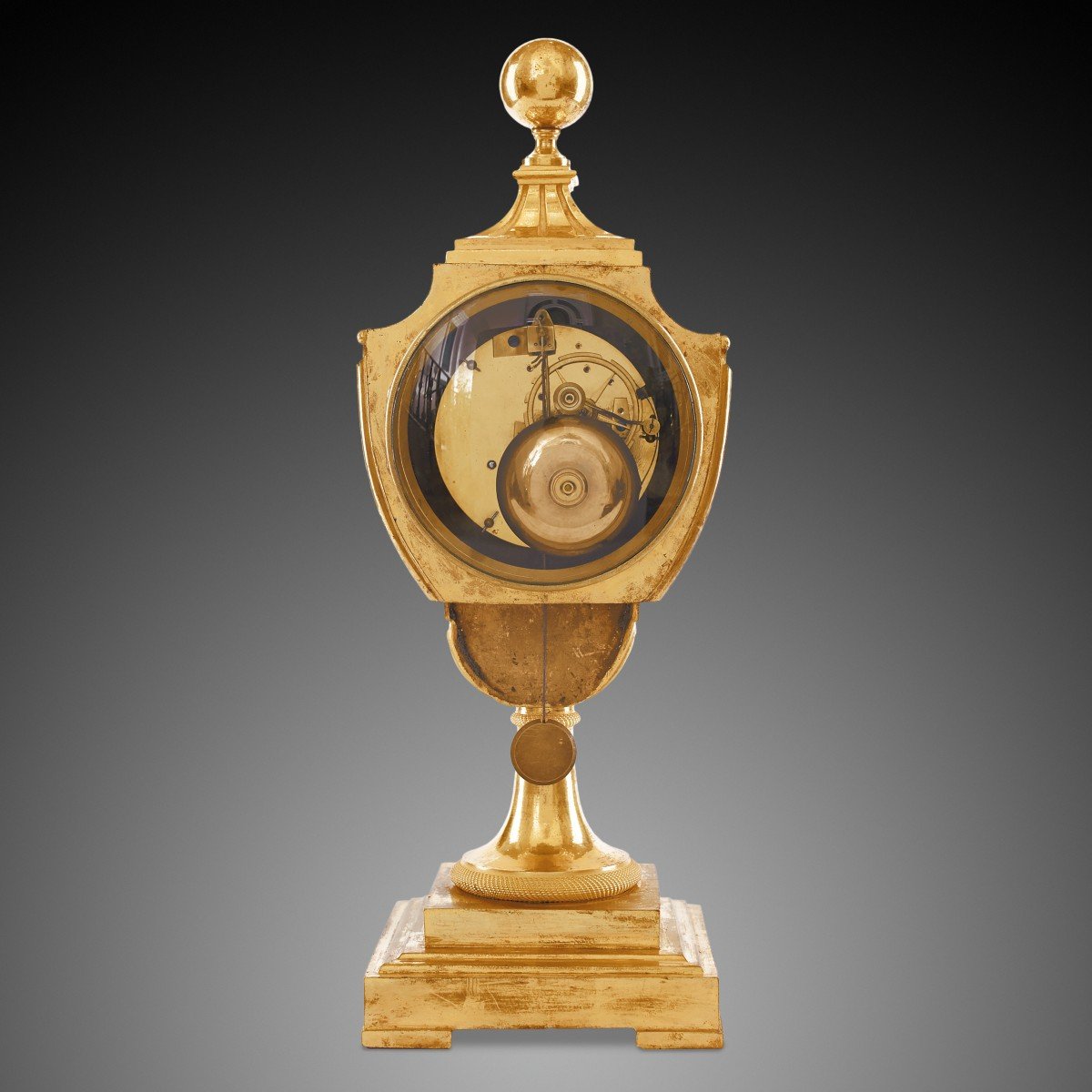
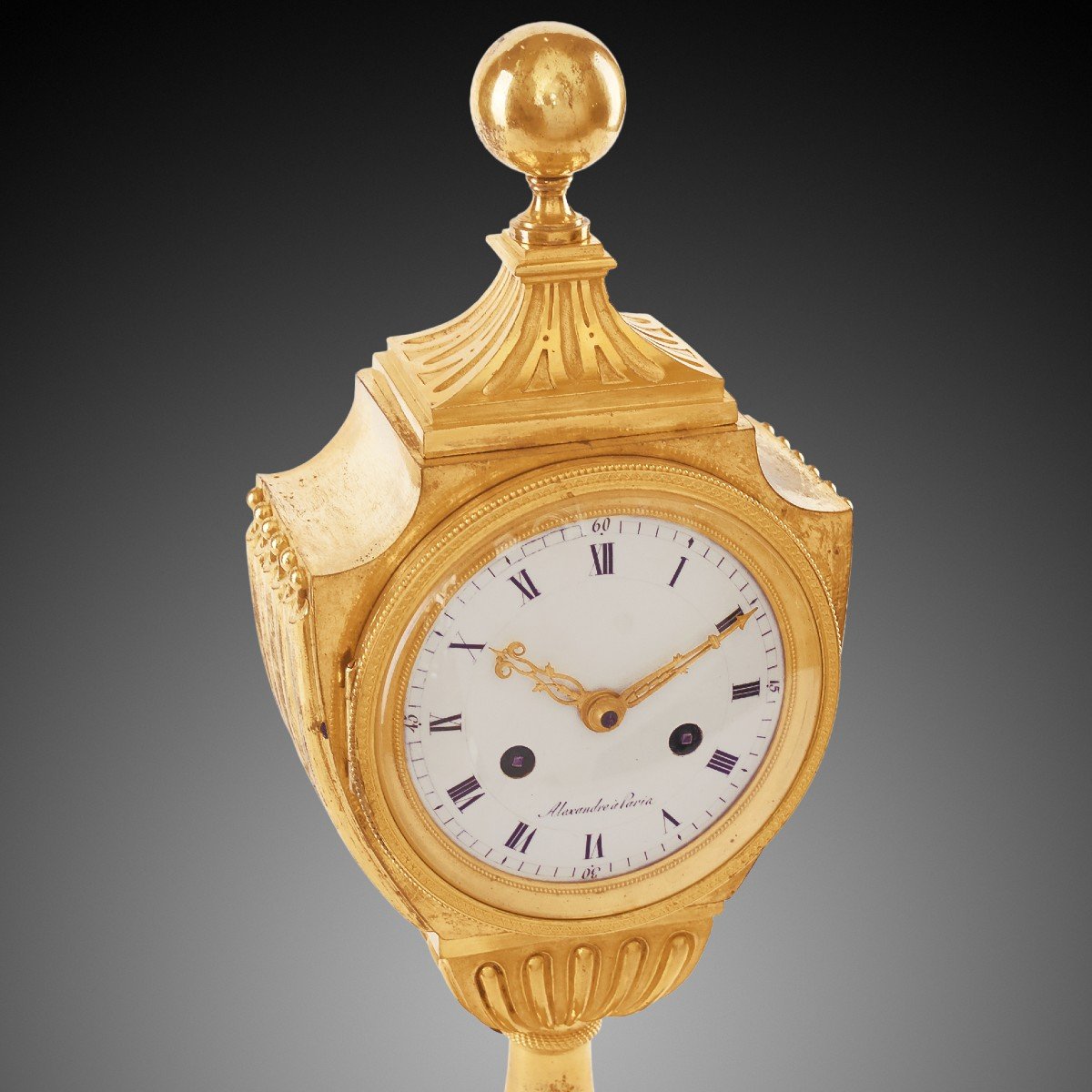
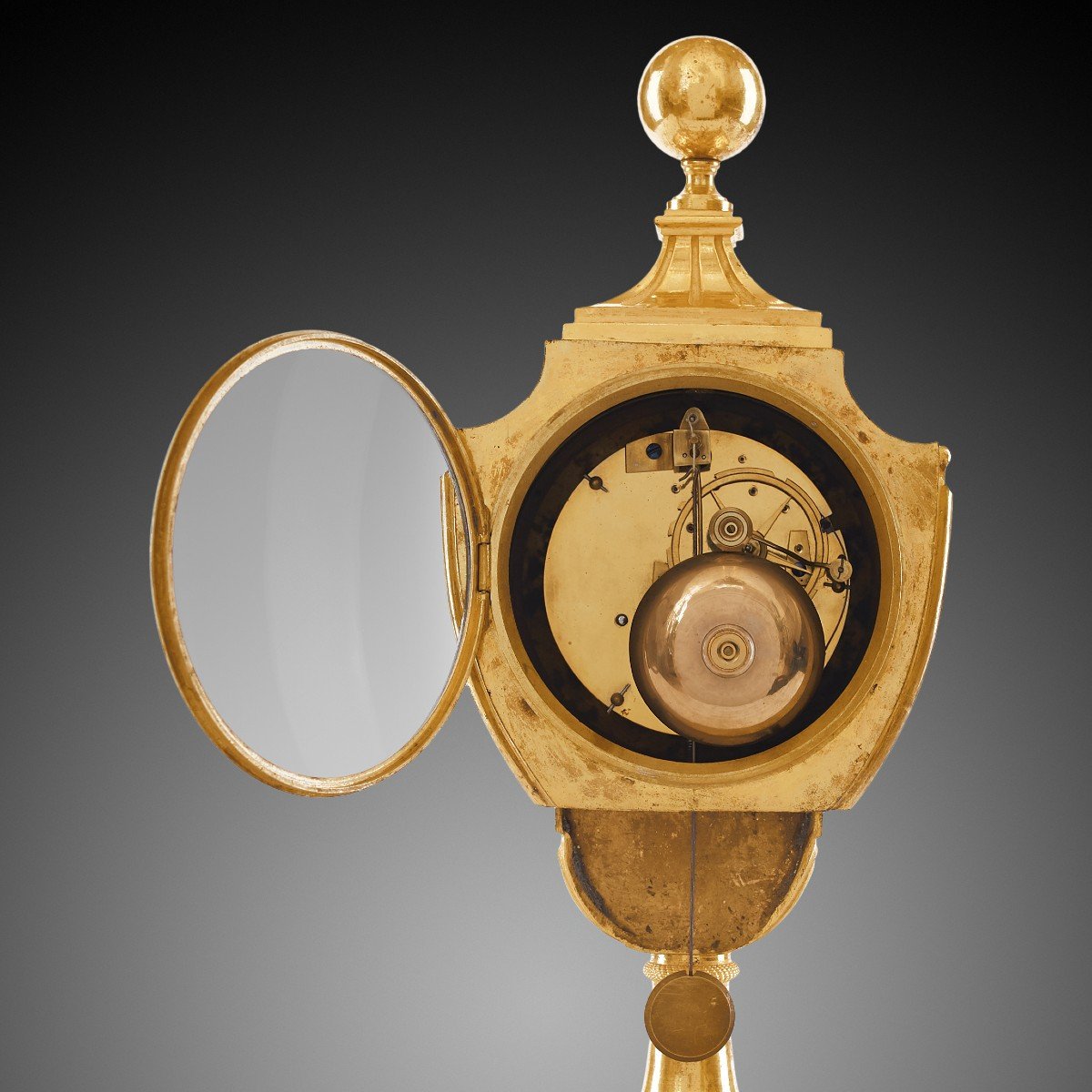
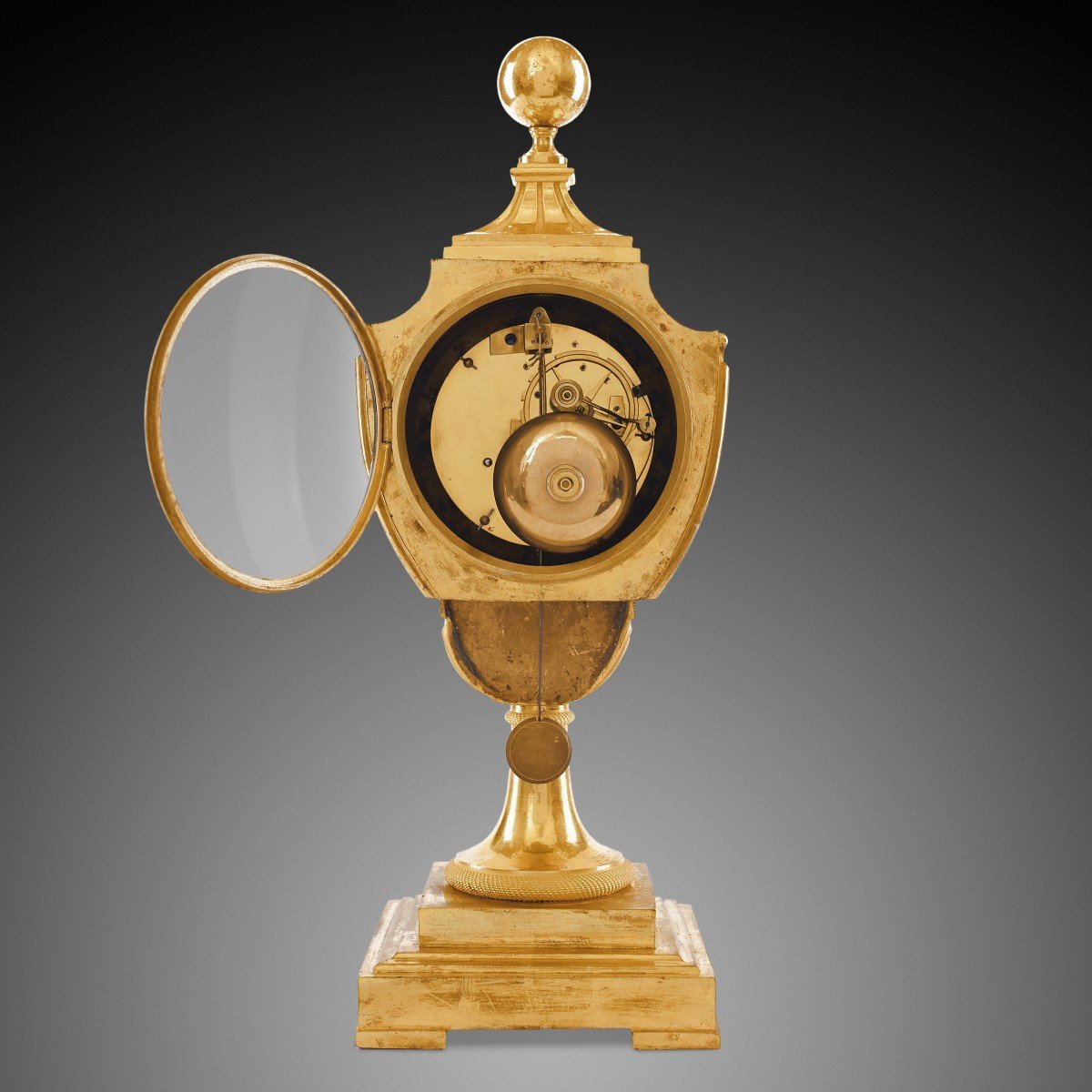









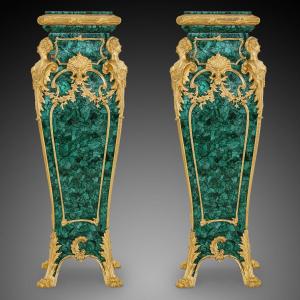


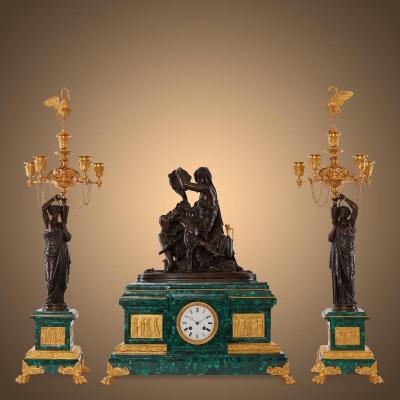





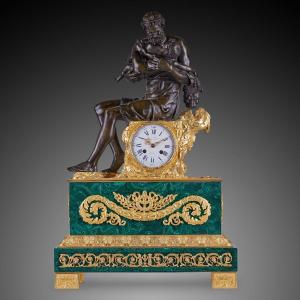
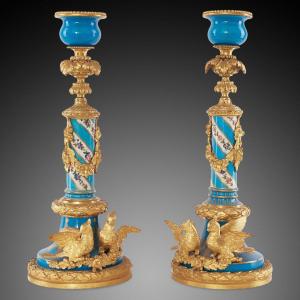
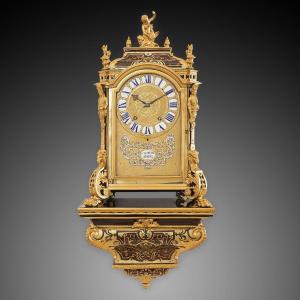




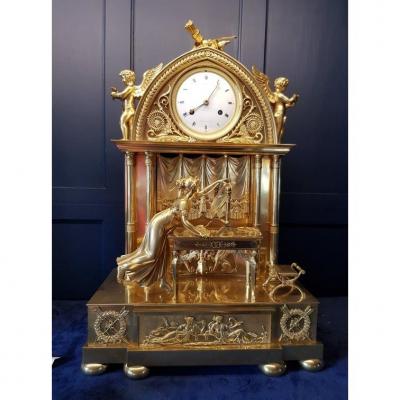





 Le Magazine de PROANTIC
Le Magazine de PROANTIC TRÉSORS Magazine
TRÉSORS Magazine Rivista Artiquariato
Rivista Artiquariato